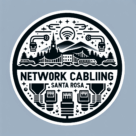What Is Type 2 Wire? A Complete Guide for Homeowners and Technicians
If you’ve ever browsed electrical or low-voltage supplies, you’ve probably seen the term Type 2 wire and wondered what it means. Understanding wire classifications is essential for safety, performance, and compliance — especially when installing or upgrading electrical or communication systems. In this guide, we’ll break down what Type 2 wire is, where it’s used, and why it matters. Our certified low voltage wiring experts in Santa Rosa specialize in safe and reliable electrical and data cabling installations for all property types.
What Is Type 2 Wire?
Type 2 wire refers to a specific insulation and construction standard used for electrical or charging applications — most commonly EV (electric vehicle) charging cables and low-voltage power systems. The “Type 2” designation defines the connector type, insulation quality, and operating conditions the wire can safely handle.
In the U.S. and Europe, “Type 2” can refer to different contexts:
- EV Charging (IEC 62196 Type 2): Used for Level 2 electric vehicle charging stations.
- Photovoltaic / Solar (PV Type 2 wire): Used for connecting solar panels to inverters.
- Low-Voltage or Signal Wiring (CL2 / Class 2): Common in residential and commercial low-voltage systems.
Let’s break down each meaning so you can identify which one fits your project.
Type 2 Wire in EV Charging Applications
In the world of electric vehicles, “Type 2” usually refers to the Type 2 connector or cable system standardized under IEC 62196. It’s the most widely used connector in Europe and also supports Level 2 charging in North America.
Key features include:
- Supports both single-phase and three-phase charging
- Handles up to 22 kW of power output
- Equipped with safety locking and communication pins
- Durable, weather-resistant insulation for outdoor use
For homeowners in California and across the U.S., Type 2 EV cables are used with many popular chargers like Tesla (via adapters), BMW, Mercedes, and Audi.
Type 2 Wire in Solar and Photovoltaic Systems
In solar installations, Type 2 (PV Wire) refers to single-conductor wire built for outdoor and high-temperature environments. These wires are commonly used to connect solar panels to inverters or combiner boxes.
Main characteristics:
- Rated for 600V to 2000V DC systems
- Resistant to sunlight, moisture, and high heat
- Made with cross-linked polyethylene (XLPE) insulation
- Complies with UL 4703 and NEC Article 690 for photovoltaic systems
Because of California’s growing solar energy use, PV Type 2 wire is widely installed to meet both safety and efficiency standards.
Type 2 Wire in Low-Voltage and Signal Wiring
In low-voltage applications, “Type 2” can refer to Class 2 (CL2) wire, defined by the National Electrical Code (NEC). CL2 cable is used for systems that operate below 150 volts, including:
- Security cameras and alarm systems
- Thermostats and HVAC controls
- Doorbells and intercom systems
- Data or audio distribution systems
CL2 cable has flame-retardant insulation and is tested for safe use inside walls and ceilings. For many CCTV or home automation installations in California, this is the wire type you’ll use to comply with local low-voltage codes.
Differences Between Type 1 and Type 2 Wire
| Feature | Type 1 Wire | Type 2 Wire |
|---|---|---|
| Use Case | Basic/temporary or low-power applications | Standard for higher-power or permanent installs |
| Voltage Rating | Lower (often under 300V) | Higher (up to 600V or more depending on type) |
| Durability | Moderate | Enhanced UV, heat, and abrasion resistance |
| Typical Use | Indoor wiring | Outdoor or higher-power systems |
In short, Type 2 wire provides better insulation, durability, and power handling, making it the preferred choice for most modern applications.
Why Choosing the Right Wire Type Matters
Using the correct wire type is crucial for:
- Safety: Prevents overheating, electrical fires, and code violations.
- Performance: Reduces voltage drop and signal loss.
- Longevity: Protects against UV, moisture, and temperature damage.
- Compliance: Meets NEC, UL, and California building code requirements.
Always check your system’s voltage and environment before purchasing or installing wire. Similar to Type 2 wiring, a 3 core cable also serves specific electrical purposes depending on the system’s requirements.
Common Applications of Type 2 Wire
You’ll find Type 2 wire used in many California projects, including:
- EV charging stations for homes and commercial lots
- Solar energy systems and battery backups
- Low-voltage networks for CCTV, HVAC, and smart homes
- Outdoor lighting and landscape systems
Final Thoughts
Type 2 wire isn’t just a single product — it’s a category that represents advanced insulation, higher performance, and code compliance across several industries. Whether you’re wiring an electric vehicle charger, a solar energy system, or low-voltage devices, choosing the right Type 2 cable ensures safety, efficiency, and reliability. To understand how Type 2 wire fits within electrical systems, it helps to know the roles of L1, L2, and L3 wiring in power circuits.
If you’re unsure which Type 2 wire fits your project, consult a licensed low-voltage or electrical contractor in California. They can help you select and install the correct wire type for your specific application.
